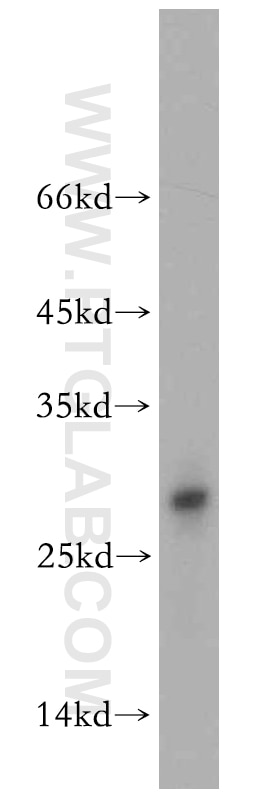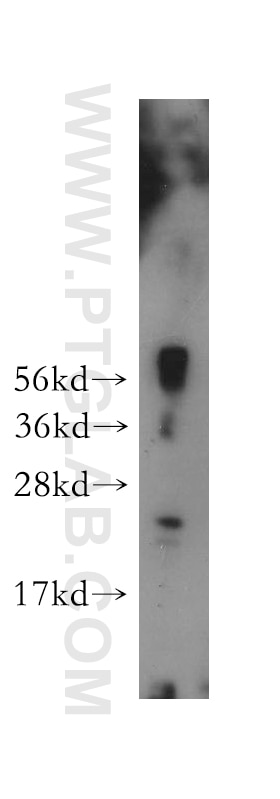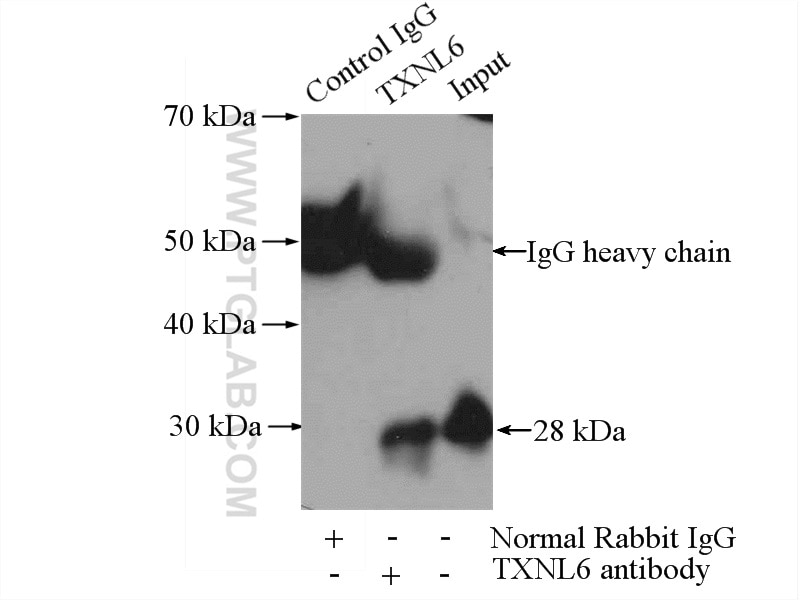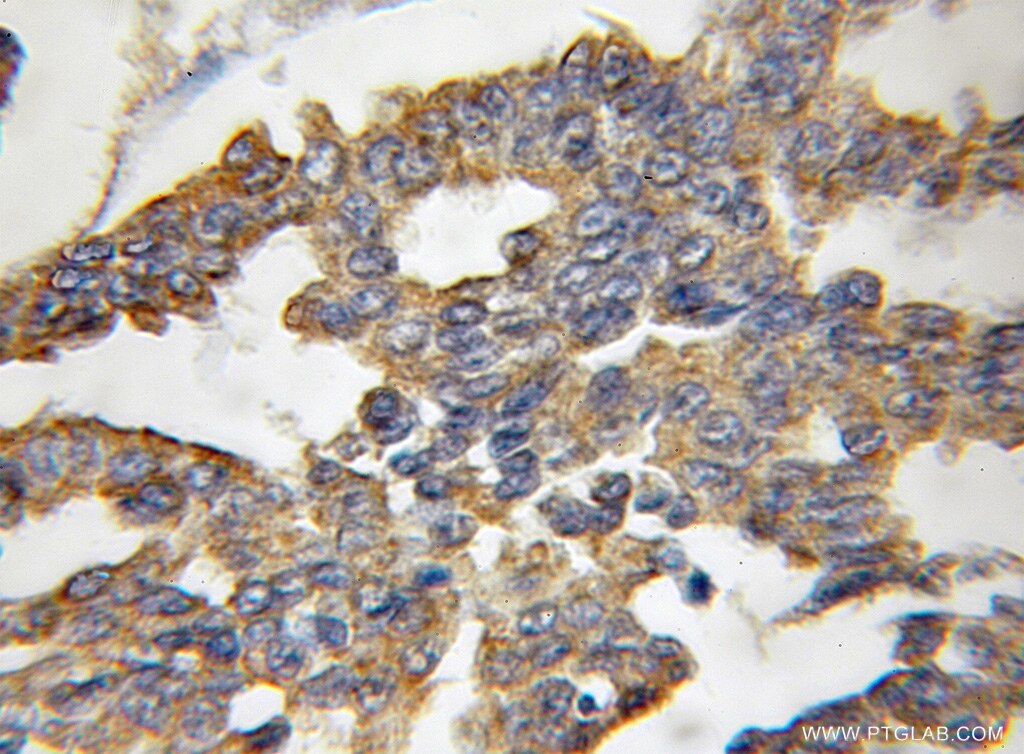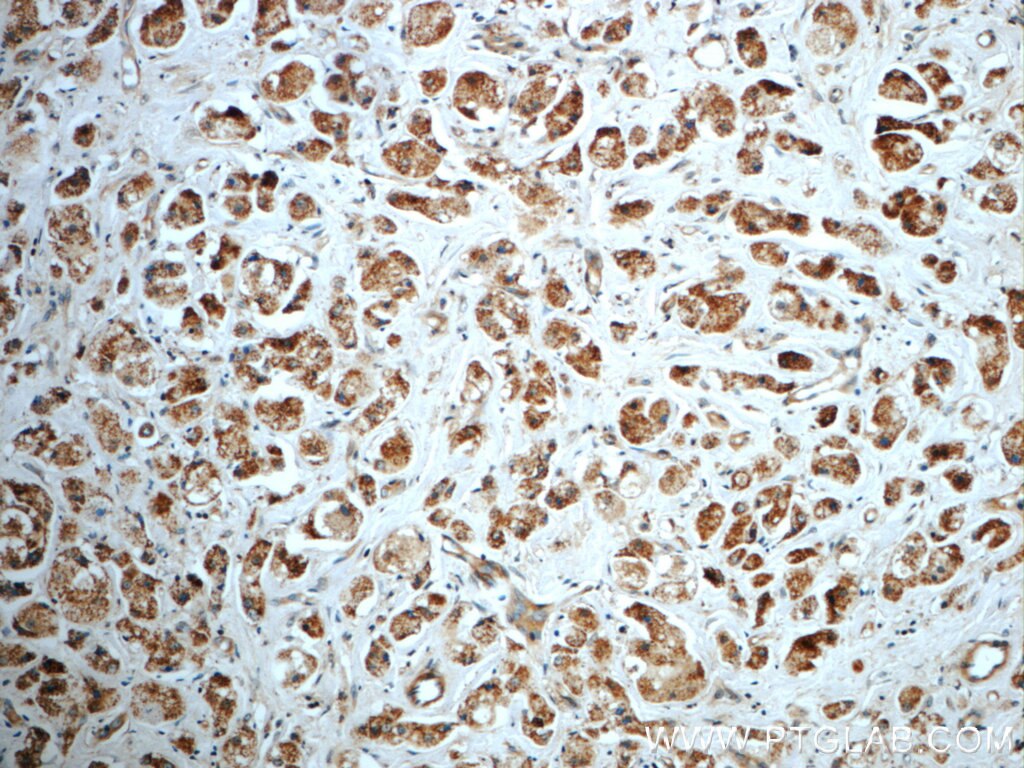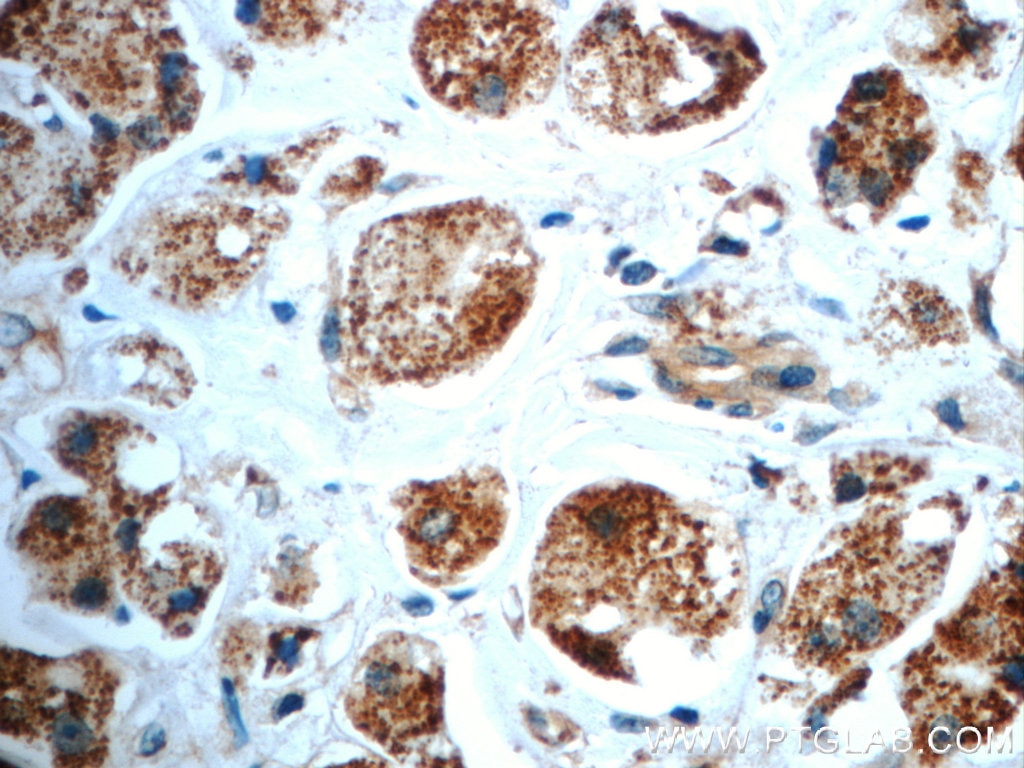TXNL6 Polyklonaler Antikörper
TXNL6 Polyklonal Antikörper für WB, IP, IHC, ELISA
Wirt / Isotyp
Kaninchen / IgG
Getestete Reaktivität
human, Maus und mehr (1)
Anwendung
WB, IP, IF, IHC, ELISA
Konjugation
Unkonjugiert
Kat-Nr. : 11203-1-AP
Synonyme
Geprüfte Anwendungen
| Erfolgreiche Detektion in WB | Maushirngewebe, HeLa-Zellen |
| Erfolgreiche IP | Maushirngewebe |
| Erfolgreiche Detektion in IHC | humanes Mammakarzinomgewebe Hinweis: Antigendemaskierung mit TE-Puffer pH 9,0 empfohlen. (*) Wahlweise kann die Antigendemaskierung auch mit Citratpuffer pH 6,0 erfolgen. |
Empfohlene Verdünnung
| Anwendung | Verdünnung |
|---|---|
| Western Blot (WB) | WB : 1:500-1:3000 |
| Immunpräzipitation (IP) | IP : 0.5-4.0 ug for 1.0-3.0 mg of total protein lysate |
| Immunhistochemie (IHC) | IHC : 1:20-1:200 |
| It is recommended that this reagent should be titrated in each testing system to obtain optimal results. | |
| Sample-dependent, check data in validation data gallery | |
Veröffentlichte Anwendungen
| WB | See 1 publications below |
| IF | See 2 publications below |
Produktinformation
11203-1-AP bindet in WB, IP, IF, IHC, ELISA TXNL6 und zeigt Reaktivität mit human, Maus
| Getestete Reaktivität | human, Maus |
| In Publikationen genannte Reaktivität | human, Hausschwein |
| Wirt / Isotyp | Kaninchen / IgG |
| Klonalität | Polyklonal |
| Typ | Antikörper |
| Immunogen | TXNL6 fusion protein Ag1691 |
| Vollständiger Name | nucleoredoxin-like 1 |
| Berechnetes Molekulargewicht | 24 kDa |
| Beobachtetes Molekulargewicht | 26-28 kDa |
| GenBank-Zugangsnummer | BC014127 |
| Gene symbol | NXNL1 |
| Gene ID (NCBI) | 115861 |
| Konjugation | Unkonjugiert |
| Form | Liquid |
| Reinigungsmethode | Antigen-Affinitätsreinigung |
| Lagerungspuffer | PBS with 0.02% sodium azide and 50% glycerol |
| Lagerungsbedingungen | Bei -20°C lagern. Nach dem Versand ein Jahr lang stabil Aliquotieren ist bei -20oC Lagerung nicht notwendig. 20ul Größen enthalten 0,1% BSA. |
Hintergrundinformationen
TXNL6, also named as NXNL1, belongs to the nucleoredoxin family. It may play a role in cone cell viability, slowing down cone degeneration, does not seem to play a role in degenerating rods. TXNL6 is a Novel Oxidative Stress-Induced Reducing System for Methionine Sulfoxide Reductase A Repair of a-Crystallin and Cytochrome C in the Eye Lens. It serve as a reducing system for MsrA repair of the essential lens chaperone a-crystallin/sHSP and mitochondrial cytochrome c. TXNL6 is induced at high levels in human lens epithelial cells exposed to H2O2-induced oxidative stress.(PMID:21079812)
Protokolle
| PRODUKTSPEZIFISCHE PROTOKOLLE | |
|---|---|
| WB protocol for TXNL6 antibody 11203-1-AP | Protokoll herunterladen |
| IHC protocol for TXNL6 antibody 11203-1-AP | Protokoll herunterladenl |
| IP protocol for TXNL6 antibody 11203-1-AP | Protokoll herunterladen |
| STANDARD-PROTOKOLLE | |
|---|---|
| Klicken Sie hier, um unsere Standardprotokolle anzuzeigen |
Publikationen
| Species | Application | Title |
|---|---|---|
PLoS One TXNL6 is a novel oxidative stress-induced reducing system for methionine sulfoxide reductase a repair of α-crystallin and cytochrome C in the eye lens. |
